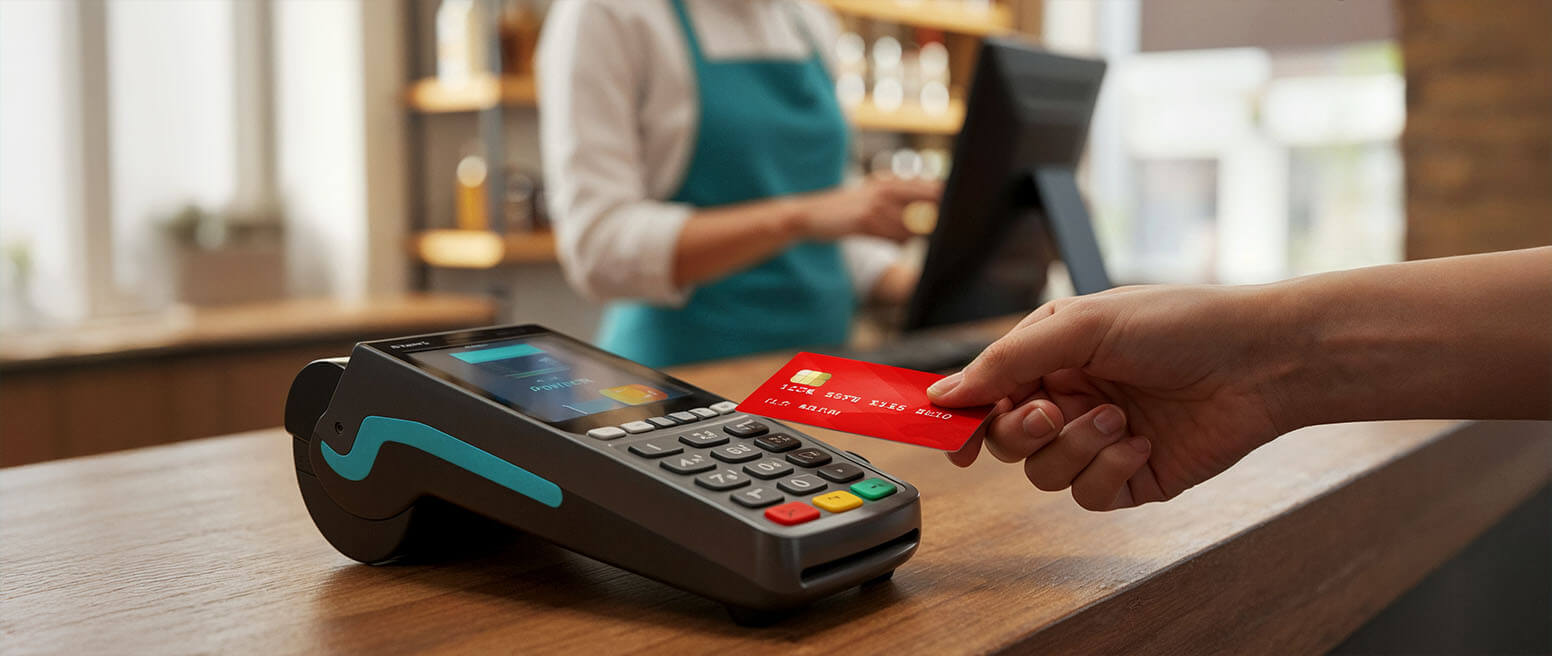A Brief Rundown on PINless Debit Technology & How it Works
By eliminating the need for a PIN entry at checkout, PINless debit transactions allow customers to complete transactions more quickly and seamlessly.
Of course, the primary benefit for most merchants is that PINless debit transactions can be as much as 20% to 30% cheaper than signature networks. There’s more choice inherent in PINless debit transactions.
Signature transactions are always processed by the card network whose logo is featured on the payment method. But, merchants can use “smart” routing to choose the best-priced option when submitting a transaction for processing. So, for example, a transaction that Visa charges $0.50 to process may cost as little as $0.35 if processed on Shazam.
PINless transactions also settle more quickly than their signature-based counterparts. That makes it a great option for cash-strapped merchants who could benefit from even a marginally faster cash conversion cycle.
But, all that being said — what exactly is PINless debit? How does it work? In this article, we’ll discuss PINless debit and how “back-of-card” routing operates. We’ll also touch on some fraud risks, and offer some pointers for successful PINless debit routing.
Recommended reading
- What is EMV Bypass Cloning? Are Chip Cards Still Secure?
- Dispute Apple Pay Transaction: How Does The Process Work?
- Terminal ID Number (TID): What is it? What Does it Do?
- How EMV Chip Cards Work: Pros, Cons, Data Points & More
- The AI Gap: Banks’ Slow Adoption Creates Chances for Fraud
- Point of Sale Systems: How to Get More From Your POS Machine
What is PINless Debit?
- PINless Debit
PINless debit is a debit card transaction in which a cardholder completes a purchase without entering a PIN at checkout.
[noun]/pin • les • deb • it/
PINless debit transactions are routed through regional “back of card” debit networks like NYCE, or Shazam. This is in contrast to signature transactions, which are always routed through major card networks like Visa or Mastercard.
PINless debit can be used for both card-present and card-not-present (or “CNP”) transactions. To authorize PINless debit CNP transactions, a buyer enters their card number and address or Card Verification Values (CVVs), but does not have to input a PIN.
For card-present transactions, the buyer inserts their debit card into your merchant terminal or makes a contactless payment using an NFC-enabled mobile device. And… that’s it; the transaction is processed with no PIN entry necessary.
PINless debit card transactions are processed exclusively by regional debit networks, which are known colloquially as “back-of-card” networks because their logos often appear on the back, rather than the front, of a debit card.
How does PINless Debit Routing Work?
When a merchant submits a PINless transaction for processing, the transaction is sent to the acquiring bank. The acquirer then obscures the cardholder’s card number with a single-use, stand-in number through a process called network tokenization. This minimizes the risk of data theft or fraud.
The basic process works like this:
The card networks are like a central hub for generating unique tokens. Previously, a transaction tokenized via one network must be routed through that network. You had to choose between a secure, costly transaction via a major card network, or foregoing tokenization for a cheaper, less secure transaction via a PINless network.
But, recent rulings from the Federal Trade Commission and the Federal Reserve now require tokenized transactions to be routable via competitor networks and non-affiliated card networks. This opens the door for secure, tokenized transactions through competitively priced PINless debit networks.
Signature Networks vs. PINless Debit: What's the Difference?
Signature networks process signature transactions, in which cardholders authorize debit card purchases by providing digital or wet-ink signatures in lieu of PINs at checkout. Signature-based transactions are handled by global “front-of-card” networks like Visa or Mastercard, which handle both debit and credit card transactions.
PINless debit networks, as discussed before, are regional “back-of-card” networks that handle debit card transactions exclusively. Both types of networks play similar roles within the broader context of the payment card transaction process. But, they differ in terms of interchange fees, the types of transactions they handle, and the way they authenticate purchases.
| Characteristic | Signature Networks | PINless Debit Networks |
| What are they? | Global “front-of-card” networks like Visa, Mastercard, American Express, or Discover. | Regional “back-of-card” networks like Accel, NYCE, Shazam, and STAR. |
| How does authentication work? | Authenticate transactions using either a PIN or a digital or wet-ink signature. Can also authenticate PINless transactions. | Do not authenticate transactions using PINs. Relies on card numbers, AVS, and CVVs for authentication. |
| What transactions do they handle? | Handle both credit and debit card transactions of all amounts. | Handle debit card transactions exclusively; transactions are typically low-value purchases. |
| Are they prone to fraud? | It depends. PIN transactions are more secure than signature-based transactions, but both are susceptible to fraud, unauthorized activity, or friendly fraud. | Yes, PINless debit transactions lack the extra security layer afforded by PIN transactions and come with greater fraud risks. |
| How fast do they settle? | Signature transactions take several days to process and settle. | PINless transactions typically settle faster, usually same-day or next-day. |
| How much do they cost merchants? | Come with higher interchange fees because merchants must route payments to a specific card network. | Come with lower interchange fees because merchants can choose between at least two card networks; they can use “smart” routing to choose the most cost-effective option. |
PINless Debit & Fraud Risk
PINless debit card transactions are more susceptible to fraud than PIN- or signature-based payments because the former lacks the extra layer of security present in the latter two transaction types.
Scammers can more easily commit fraud when there’s no PIN verification to confirm a customer’s identity. Merely being in possession of a stolen and still-active debit card can allow bad actors to make thousands of dollars worth of unauthorized purchases. Additionally, because PINless debit transactions are processed with just a card number and an expiration date, they require less data to be used or stolen than chip-and-PIN card-reading machines.
Despite the heightened risk of fraud, there are ways for to securely approach PINless debit transactions. As discussed above, tokenization is probably the most common method for this.
Another important step to secure PINless debit transactions is through proper authentication of the customer. This means investing in real-time fraud detection systems that monitor transaction patterns and flag suspicious activities. You should also encrypt customer data to ensure that it is protected during the routing process.
For CNP transactions, deploy AVS and incorporate multi-factor authentication security measures like 3-D Secure to prevent fraudsters from stealing card information. Finally, you should prioritize compliance with card network and industry security standards, like PCI-DSS.
Tips for Successful PINless Debit Routing
PINless debit can offer you lower costs and faster settlement times, not to mention less friction at checkout for consumers. But, getting a fuller picture of the potential drawbacks is just as important.
You need to balance the upfront benefits that come with lower interchange fees against the deferred risks of post-transaction chargeback and return fraud. Before implementing PINless debit routing, you should consider the following aims and how to accomplish them:
Choose the Right Payment Service Provider
Partner with service providers that support “smart” PINless debit routing. This ensures that you get access to the most competitively-priced regional card network every time you submit a debit card transaction for processing.
Ensure a Smooth Checkout Process
Work with your service provider to implement failover processes. This will let transactions be routed through another network for seamless processing, even if one network goes down. Doing so eliminates preventable debit card declines and makes the checkout process more predictable and reliable.
Detect Patterns in Transactions
You should also try to work with service providers to identify patterns in transaction volume or network performance. This way, you can determine the most efficient and effective routing path for each transaction submitted for processing.
Monitor Performance
Regularly analyze and test routing paths to identify weaknesses and possible opportunities to optimize. Invest in data analytics tools that track metrics like interchange fees, uptime, authorization rates, payment failure rates, chargeback rates, and more.
Regional “back-of-card” networks promise to make debit cards cheaper and more attractive for merchants to accept. Especially when you’re operating in capital-intensive, low-margin verticals, even a penny or two saved per transaction can make a real difference.
But, PINless debit does not come without its risks. When left unaddressed, post-transaction perils like friendly fraud or refund abuse can easily wipe away months or even years worth of interchange fee savings.
At Chargebacks911®, we help merchants manage fraud risks and minimize chargeback costs. Contact us today for a free, no-obligation ROI analysis.
FAQs
What does PINless debit mean?
PINless debit refers to a type of debit card transaction in which a cardholder can complete a purchase without having to enter a PIN code at the point of sale.
What is the difference between signature debit and PIN debit?
In a signature debit transaction, the cardholder signs their name on a touchpad or a receipt as proof of authorization. In a PIN debit transaction, the cardholder enters a PIN code on a keypad or payment terminal to authorize the purchase. Signature debit transactions generally come with higher fees because they are more fraud-prone than PIN debit transactions.
Can a debit card be charged without a PIN?
Yes. PINless debit card transactions allow cardholders to make purchases without having to enter a PIN. Alternatively, signature debit card transactions require a stylus or pen-drawn autograph in lieu of a PIN.
How did someone use my debit card without the PIN?
A scammer who obtains your debit card details may be able to make unauthorized purchases, even if they don’t know your PIN. For example, the fraudster can engage in a PINless debit card transaction, select the “credit card” option as checkout, or opt for a signature-based debit card purchase.















